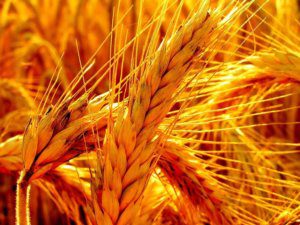
Abnormally hot weather has set in many Asian countries, including India and China, local media reported Wednesday.
Temperature records for April set this week in Laos, where the temperature rose to 42.7 degrees Celsius, as well as in Thailand – up to 45 degrees Celsius, in Myanmar – up to 44.
The day before, Thai Prime Minister Prayut Chan-ocha expressed concern about the “dangerously high temperatures in different parts of Thailand.” He said the temperature could reach 52.3 degrees Celsius in the Bangkok area.
In China, several cities – Chengdu, Zhejiang, Nanjing and Hangzhou – recorded record high temperatures.
The meteorological service announced about heightened danger because of the heat in some regions of India. In six cities in the north and east of India the temperature this week rose above 44 degrees Celsius, in the capital – above 40. It is expected that the abnormally hot weather will continue until the end of this week. In some states of the country, classes in schools have been canceled, and 13 people have been reported dead from the consequences of the hot weather.
In most regions of Pakistan and Bangladesh, the air has been warming above 40 degrees Celsius for several days.
The results of last year’s study by Harvard and Washington universities showed that intense heat with temperatures dangerous for people during this century is likely to come 3 – 10 times more often than usual.

Ukraine can intensify trade with Asian countries, while maintaining focus on European markets, the Deputy Minister for Development of Economy, Trade and Agriculture, Ukraine’s Trade Representative Taras Kachka has said.
“We have a good dialogue with these countries. It is very likely that we will continue to talk about the intensification of trade. There are requests from Indonesia. There are talks with Malaysia,” he said during the discussion “Trade Wars: the Art of Defense.”
According to the trade representative, the demand for Ukrainian products from Asia is growing and this is a phenomenon of 2020.
“The fact that this year the dynamics of trade with Asia is greater than with the EU does not mean that we should forget the EU and flee to Asia,” he said.
Kachka added that next year Ukraine will “evolutionarily” update its Export Strategy, which will allow the country to be more predictable in terms of trade policy.
“The less “somersaults” we have, the better. In fact, we need a gradual systematic work in all directions,” the official said.

Exports of Ukrainian agricultural products in January-August 2018 grew by $65.6 million year-over-year, reaching $11.5 billion or 37.3% of total exports of Ukraine. According to a press release of the Agricultural Policy and Food Ministry issued on Friday, in January-August 2018 foreign trade with agricultural goods reached $15 billion. “Ukrainian agricultural export grew by $65.6 million. The growth of indicators occurred mainly thanks to such items as rapeseed, wheat, meat and poultry byproducts, eggs, nuts, butter, chocolate and other goods,” the press service said, citing Deputy Agricultural Policy and Food Minister for European Integration Olha Trofimtseva.
According to her, in the top three exported Ukrainian agricultural products remain grain crops – 36.6% of total agricultural exports, vegetable oils – 25.1% and oilseeds – 9.4%. Key buyers in the regional export structure are Asian countries with a share of 43.6%, the European Union – 31.4% and Africa – 13.3%.
During this period, exports of agricultural products to Asian countries increased by $259.1 million compared to the eight months ending August 2017, to $5.04 billion.
“It is important to say that the first place among the key countries-importers of our products is India, to the markets of which Ukrainian food products were supplied in the amount of $1.3 billion. China took the second place with $698.8 million, Egypt – the third place with $ 685.5 million,” Trofimtseva said, adding that the Netherlands was among the five largest importers of Ukrainian products as compared with eight months of 2017 with $671.9 million and Spain with $551.3 million.